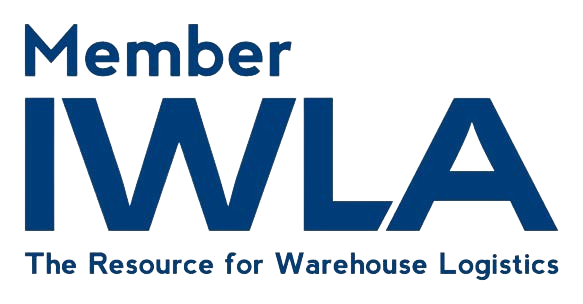When you need to store inventory, whether for a short amount of time or in the long term, you must know how much warehouse space you need. If you overestimate, you’ll end up spending more than necessary. If you underestimate, you may not have enough room for all of your inventory.
Learn how to calculate warehouse space so you can find the right storage solution or contract warehouse for your needs.
Warehouse Space Requirements
Your company can sell or manage similar products to those of another business and still have differing warehouse needs. When calculating how much space you need in a warehouse, consider the following factors:
- Pallet size: Pallets come in a range of standard sizes, with the most common being 48 inches by 40 inches. Square pallets are also available. Pallet size influences how much room your inventory needs on a warehouse shelf.
- Number of pallets: You also need to know the number of pallets you have to store — or at least an estimate of the number of pallets.
- Stacking height: You can stack pallets on top of each other to maximize vertical space. Keep in mind that stacks that are too tall can topple. It’s essential to know the allowable stacking height, which is based on guidelines from the Occupational Safety and Health Administration. The stacking height varies based on the size of the pallets, the materials being stored and pallet weight.
- Warehouse space utilization: The layout of your inventory in a warehouse also influences the amount of space you need. Warehouse space utilization refers to how efficiently you make use of the area in a facility. It can be affected by factors that are beyond your control, such as the shape of your inventory.
Warehouse Space Utilization Explained
Warehouse space utilization shows how much of the storage area in a warehouse is used. It’s the ratio of space in use compared to available storage space. A ratio of 100% would mean that all of the usable room in the warehouse is filled to capacity.
The ideal warehouse space utilization ratio for you depends on several factors. These include the shape of your inventory, its ability to stack, the expiration dates and the number of products you have. Some common ratios include:
- 40%: Products that can’t stack neatly or that form unusual shapes on a pallet will naturally take up more space in a warehouse. You’ll need more room to maneuver around the products when picking them, so you won’t be able to use as much of the available space.
- 50%: Some types of products have expiration dates, such as food or cosmetics. You need to be aware of the dates on these products and send the older ones out first. A maximum space utilization ratio of 50% should allow for adequate space to maneuver around your inventory and turn it correctly. If the products don’t stack neatly, you’ll need a lower ratio.
- 60%: Your space utilization ratio can be slightly higher if your products turn frequently but don’t have expiration dates. The 60% ratio is also ideal for companies that have multiple product types and up to 100 stock-keeping units (SKUs).
- 70%: If you have up to 100 SKUs that don’t have expiration dates and turn up to six times per year, you can use up to 70% of the space in the warehouse.
- 80%: Companies that only have a few SKUs that don’t expire and don’t have much turnover can use up to about 80% of warehouse space without issue.
Note that you never want your warehouse space utilization ratio to be 100%. The higher the ratio, the harder it is for staff to move around the warehouse and pick products.
How to Calculate Warehouse Capacity
A warehouse space calculator will quickly crunch the numbers for you to let you know the area you need based on the number of pallets you have to store, the size of the pallets and your preferred utilization ratio. You can also do the math yourself to determine your storage needs. Follow these steps:
- Add up the number of pallets you have to store. You can estimate this number if you’re not sure of the exact amount.
- Divide the pallet number by the stacking height. If you plan to stack two pallets on top of each other, divide by two. If you can’t stack pallets at all, divide by one.
- Calculate the square footage of the pallets. Multiply pallet width by length — often 48 inches by 40 inches — to find the square footage. If you’re using inches, remember to divide the product by 12 to convert it to feet.
- Multiply the stacking height by the square footage. If you have 16 48-by-40-inch pallets that you can stack two high, multiply eight by 160 to get 1,280.
- Divide by your desired warehouse utilization ratio. In this example, use a utilization ratio of 50%. The solution to 1,280 divided by 50% is 2,560 square feet.
When deciding how much warehouse storage space you need, give yourself room to grow. If you plan on adding more product types or storing more inventory in the future, increase the number of pallets in your calculation or adjust your utilization ratio accordingly.
We Can Help You Determine How Much Warehouse Space You Need
When estimating warehouse space, it is important to note that every scenario is different depending on the needs of your business. What’s more, each business warehouse capacity can vary depending on different factors, such as the type of inventory or the demand for your products.
While the requirements and process above are a good benchmark, it is best to work with an experienced warehousing professional to determine the appropriate amount of space you need. At Crown LSP, we can help you figure out an accurate warehouse utilization ratio and offer solutions to best store your business’s inventory.
Outsource to a 3PL and Optimize Your Warehouse Space
Take the leap towards warehouse space optimization by partnering with a trusted 3PL.
Contact Crown LSP Group for Warehousing Services
Crown LSP Group is a distribution solutions company that offers contract warehousing arrangements. We can provide custom and standard arrangements based on your company’s needs. You can lease an entire warehouse facility or a designated area on a short- or long-term basis. To discuss your warehouse storage needs and request a quote, contact us today.







